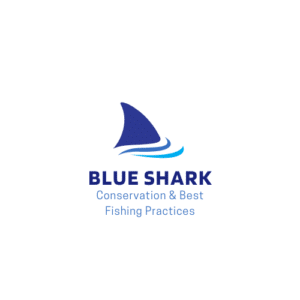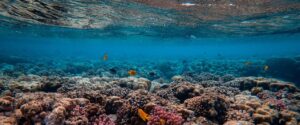Blue sharks (Prionace glauca) are one of the most widely distributed shark species in the world. Recognizable by their striking blue coloration and slender bodies, they inhabit deep the deep ocean, primarily in temperate and tropical regions. As an avid fisherman and wildlife advocate, John Perrys is fascinated by these creatures and how they help sculpt ocean life around them.
Biology and Habitat of Blue Sharks
Blue sharks prefer deeper waters, often found at depths of 200 meters or more, but they have also been spotted closer to the surface. Their diet consists mainly of fish, squid, and occasionally other sharks. Blue sharks are viviparous, meaning they give birth to live young, with females typically giving birth to 25-50 pups after a gestation period of about 9-12 months.
Their distinctive blue coloring of blue sharks serves as camouflage in the ocean, providing protection from predators and aiding in their hunting strategies. Blue sharks are social animals and often found in groups, especially during feeding or mating seasons.

The Art of Blue Sharks
It is common to see blue sharks used in art and sculpture due to their striking and vibrant coloration, which features a stunning blend of deep blue hues transitioning to a silvery underbelly. This captivating contrast not only evokes the allure of the ocean but also symbolizes grace and fluidity, making them an inspiring subject for artists. Their dynamic, sleek shapes are often replicated in various mediums, from paintings to intricate sculptures as these sharks are quite recognizable to the general population. The blue shark’s beauty captures the imagination, prompting artists to explore themes of nature, freedom, and the mysteries of marine life, further solidifying their place in the world of art.

Conservation Status of Blue Sharks
While blue sharks are not currently considered endangered, they face risks from overfishing, bycatch in commercial fishing, and habitat loss. As apex predators, their decline can significantly impact the sculpture of marine ecosystems. In his wildlife conservation and protection efforts, John Perrys has turned to a number of organizations aiming to manage blue shark populations while promoting sustainable fishing practices. These organizations include:
- Mission Blue
- Saving the Blue
- Shark Trust
- Shark Angels
- Shark Advocates International
Regulations and Best Practices
Fishing for blue sharks is popular among sport fishermen such as John Perrys. However, regulations vary by region, and it’s essential to familiarize yourself with local laws regarding catch limits and fishing methods. Many regions have implemented measures to protect blue shark populations, including size limits and seasonal restrictions.
When fishing for blue sharks, consider the following best practices:
- Use Circle Hooks: These reduce the risk of deep hooking and increase the chances of a safe release.
- Limit Catch: Keep only what you will consume and release the rest carefully.
- Handle with Care: Use wet hands or gloves when handling sharks to protect their skin.
- Quick Release: If not keeping the shark, minimize handling time and use tools to remove hooks quickly.
Ethical Considerations
Sport fishing should prioritize conservation and sustainability. John Perrys participates in programs that promote catch-and-release practices and supports local regulations designed to protect blue shark populations. Engaging in ethical fishing not only helps maintain healthy ecosystems but also ensures future generations can enjoy these magnificent creatures.
